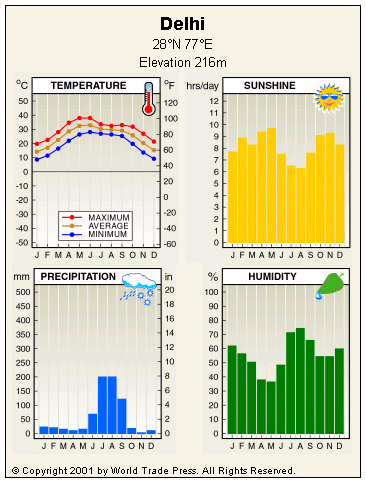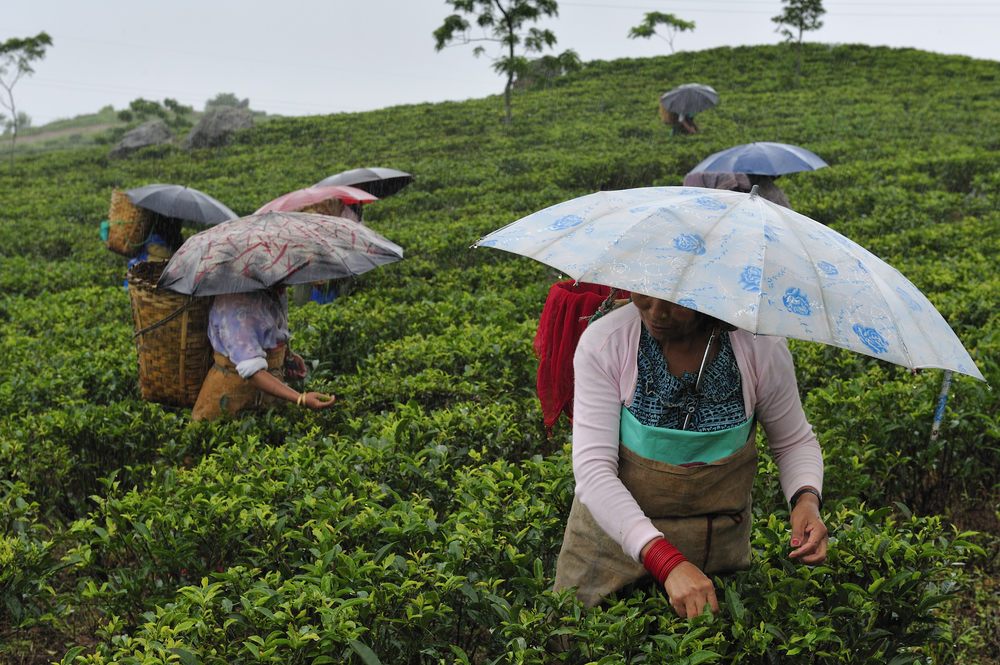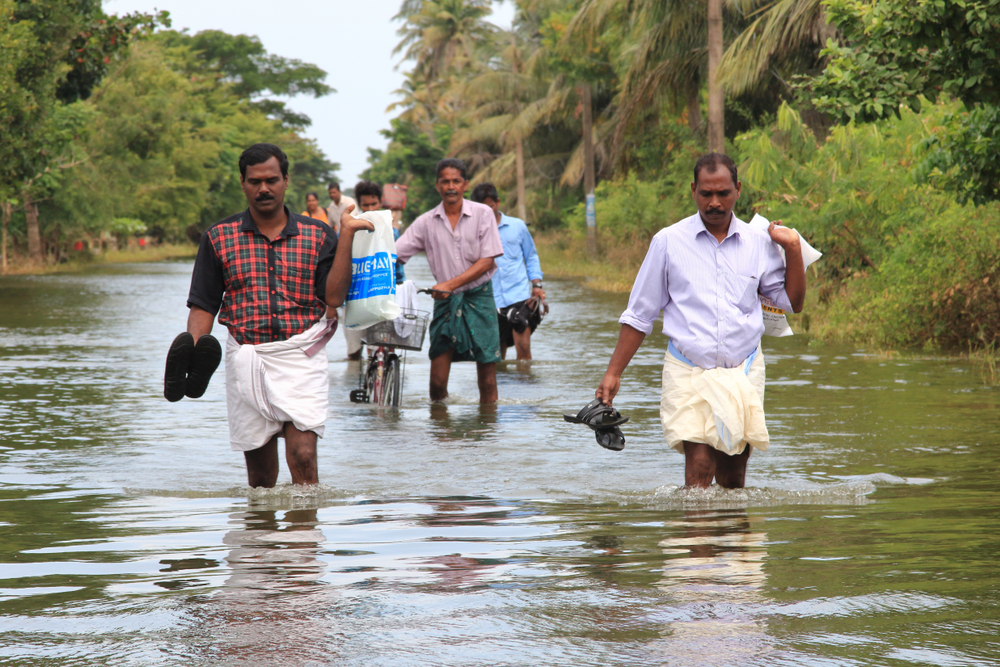Country Snapshot: Climate Overview
India is a large country located in southwest Asia, with the Himalayan mountain range to the north and the Indian Ocean to the south. The country’s climate is extremely diverse, with tundra in the northernmost regions, desert and steppe country in the northwest, humid subtropics in the northeast, and tropical savanna through much of the interior and coast.
Seasons
The wet season, driven by the southwest monsoon, lasts from May or June to October throughout much of the country; the northern regions typically do not receive rain until June.
The cool dry season lasts from October to March.
The hot dry season lasts from April to May or June.
Regional Variations
India has seven distinct regions: the northern mountains, the northern plains, the Rajasthan Desert, the Deccan plateau, the west coast, the southeast coastlands, and Assam in the extreme northeast.
The northern mountains, including the Himalayas and their foothills, can receive rain year-round. Winters are cool and pleasant, and temperatures drop at higher elevations. Darjeeling, at 2,050 meters (6,730 feet) above sea level, has temperatures ranging from 2–19°C (36–66°F) and monthly rainfall from 8–798 millimeters (0.3–31 inches).
The northern plains, which extend from the Punjab to the Ganges delta, experience high temperatures from March until June. Temperatures drop with the main monsoon rains in July, but the humidity can be very unpleasant. Rainfall decreases from east to west, with monthly rainfall ranging from 9–325 mm (0.4–13 in) in the east, and 5–257 mm (0.2–10 in) in the west. Temperatures can range from 7–39°C (45–102°F).
The Rajasthan desert is dry and very hot. Monsoon season is hot and humid, while the cool season from November to March is warm, sunny, and dry. Temperatures can range from 5–42°C (41–108°F), while monthly rainfall varies from 3–81 mm (0.1–3.2 in).
The Deccan plateau, in the country’s interior, experiences moderate rainfall and cool temperatures due to its altitude. The southern portion of the plateau is tropical in its temperature. Hyderabad, which lies in the southern part, experiences temperatures from 15–39°C (59–102°F), and monthly rainfall from 3–184 mm (0.1–7.2 in).
The west coast, a narrow plain backed by the Western Ghats mountains, has heavy rainfall during monsoon season. The heat is often oppressive due to high humidity, but some of the Western Ghats’ foothills are pleasant even during the hot season. Temperatures range from 17–34°C (63–93°F), and monthly rainfall varies from 0–959 mm (0–38 in).
The southeastern coastlands do not experience significant rainfall until October to December, and during this time tropical storms or cyclones are common. The cloudless period from June to September exhibits high temperatures and humidity. Temperatures vary from 22–33°C (72–91°F), and monthly rainfall ranges from 21–364 mm (0.8–14 in).
Assam in the northeast is composed of plains and mountains, with heavy rains and cool temperatures. Cherrapunji, the second wettest place on earth, receives between 11–3,272 mm (0.4–129 in) of monthly rainfall. Temperatures vary from 7–23°C (45–73°F).
Copyright © 1993—2025 World Trade Press. All rights reserved.

 India
India 

